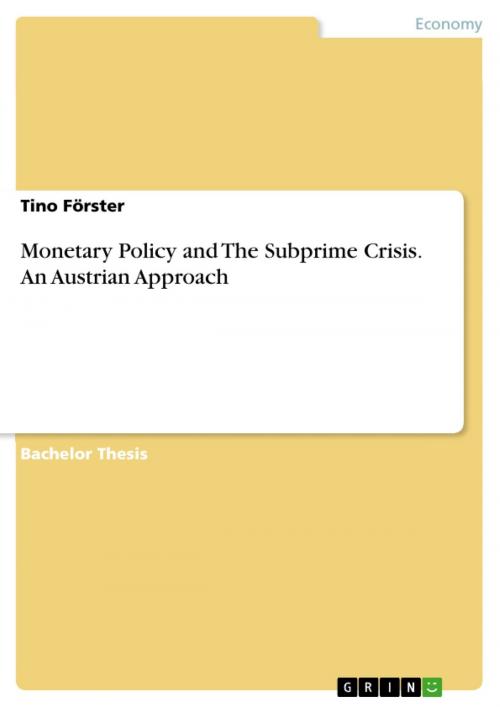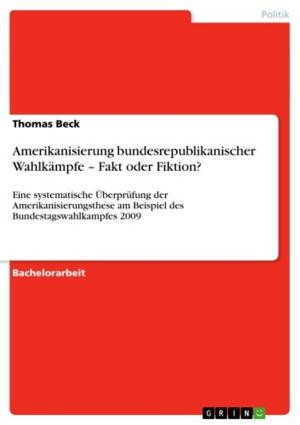Monetary Policy and The Subprime Crisis. An Austrian Approach
Business & Finance, Economics, Money & Monetary Policy| Author: | Tino Förster | ISBN: | 9783656737582 |
| Publisher: | GRIN Verlag | Publication: | September 8, 2014 |
| Imprint: | GRIN Verlag | Language: | English |
| Author: | Tino Förster |
| ISBN: | 9783656737582 |
| Publisher: | GRIN Verlag |
| Publication: | September 8, 2014 |
| Imprint: | GRIN Verlag |
| Language: | English |
Bachelor Thesis from the year 2014 in the subject Economics - Monetary theory and policy, grade: 1,0, Martin Luther University, language: English, abstract: The role of central banks and monetary policy in modern economies is a highly controversial topic. This paper attempts to show the relationship between monetary policy and the development of economic crisis, especially the recent Subprime Crisis in the USA. For this purpose the first part of the paper examines the Austrian theory of the business cycle and its illustration, the capital-based macroeconomics model. According to the Austrian theory artificially low interest-rates are responsible for misallocations of resources within the in-tertemporal capital structure and, consequently, reoccurring fluctuations within the eco-nomic system. The second part of the paper applies the Austrian theory of the business cycle to the Sub-prime Crisis and investigates the role of the Federal Reserve System for the development of the crisis. Ultimately, this paper states that expansionary monetary policy and flawed government regulations were the cause for unbalanced changes in the American structure of production and the recession.
Bachelor Thesis from the year 2014 in the subject Economics - Monetary theory and policy, grade: 1,0, Martin Luther University, language: English, abstract: The role of central banks and monetary policy in modern economies is a highly controversial topic. This paper attempts to show the relationship between monetary policy and the development of economic crisis, especially the recent Subprime Crisis in the USA. For this purpose the first part of the paper examines the Austrian theory of the business cycle and its illustration, the capital-based macroeconomics model. According to the Austrian theory artificially low interest-rates are responsible for misallocations of resources within the in-tertemporal capital structure and, consequently, reoccurring fluctuations within the eco-nomic system. The second part of the paper applies the Austrian theory of the business cycle to the Sub-prime Crisis and investigates the role of the Federal Reserve System for the development of the crisis. Ultimately, this paper states that expansionary monetary policy and flawed government regulations were the cause for unbalanced changes in the American structure of production and the recession.















